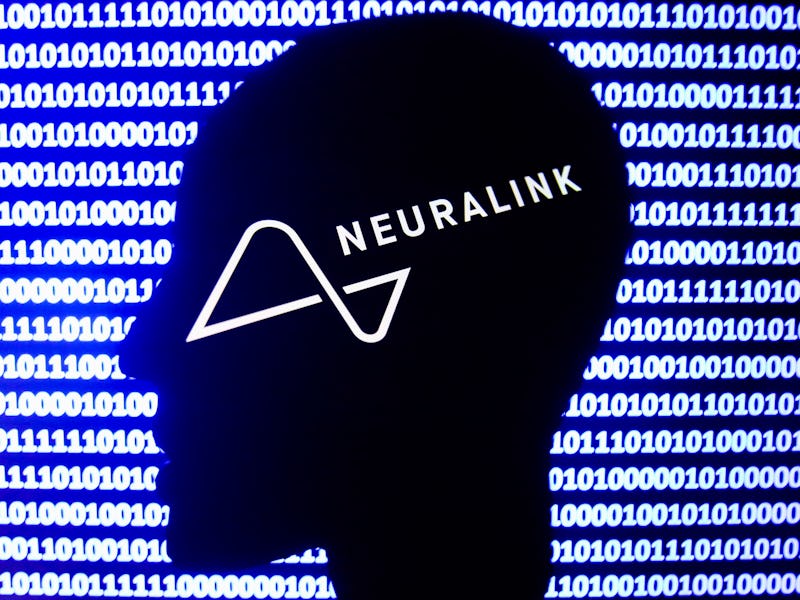Elon Musk's Neuralink demo promised miracles — but a neuroscientist says the tech is decades behind
The brain-computer interface technology touted by Neuralink has been around for several decades.

Everyone’s favorite neurotech startup Neuralink was back at it again with a show-and-tell demo Wednesday evening that felt very heavy on the tell and very lacking on the show.
Among other announcements, there were game-playing monkeys, monkeys typing on keyboards, monkeys wireless charging themselves, pigs walking on treadmills, and, a reprieve from all the animal content, a robot surgeon. Amid these demonstrations, Neuralink-CEO Elon Musk outlined lofty goals of fast-approaching clinical trials and expectations that the coin-sized wireless brain chip could see the inside of a human skull within six months.
“Obviously, we want to be extremely careful and certain that it will work well before putting a device in a human, but we’re submitted, I think, most of our paperwork to the FDA,” he said during the tech demo, which was live-streamed on YouTube. (In a statement to Reuters, the FDA declined to provide comment on any potential product applications.)
When you look at the human brain, there are 86 billion neurons and trillions of connections, Bouton says. “It’s such a complex network that we still don’t completely understand [it], and we don’t even have the tools to tap into enough nodes in that network.”
Musk said the ultimate goal of Neuralink — aside from the complete cyborg-ification of humanity and, ironically, job recruitment (the main reason for the event) — is to allow individuals with debilitating conditions like paralysis to regain their independence via connecting brains to computers. But judging from the lack of significant progress the startup had made since promising that human clinical trials would begin in 2020, its questionable whether Neuralink will ever deliver groundbreaking neuroscience.
What is Neuralink’s N1?
Just to recap, Neuralink was launched in 2019 and revealed it was testing a prototype in monkeys, followed by more testing in pigs in 2020. In 2021, the company released a video of a monkey playing Pong with its brain, demonstrating the feasibility of the telepathic capability of the implant.
Despite all the attention it has gotten over the years, the brain-computer interface technology touted by Neuralink has been around for decades, Chad Bouton, professor at the Institute of Bioelectronic Medicine at the Feinstein Institutes of Medical Research, tells Inverse. Other experts in the field have also told Inverse back in 2021 that Neuralink hasn’t yet demonstrated anything groundbreaking compared to what’s already been done, which still remains the case for Wednesday’s demo.
Big promises but can Neuralink deliver?
Two major applications that Musk announced were restoring vision to those blind at birth and helping people with severed spinal cords to move again.
“As miraculous as it may sound, we’re confident it is possible to restore full body functionality to someone who has a severed spinal cord,” said Musk.
Bouton said while restoring mobility has been done before — his lab accomplished that in 2014 with a brain implant that helped a man move his paralyzed hand — restoring vision would be a bit more tricky and unlikely to result in any commercial product any time soon.
“I don’t think we’re quite there [to restoring vision], we’re getting closer though,” he says.
Musk ambitiously wants Neuralink’s device to be able to interface with every aspect of the brain, which is also something that seems overzealous considering his accelerated timeline (which he’s always constantly shifting).
When you look at the human brain, there are 86 billion neurons and trillions of connections, Bouton says. “It’s such a complex network that we still don’t completely understand [it], and we don’t even have the tools to tap into enough nodes in that network.”
During the demonstration, Neuralink also demonstrated R1, its robotic surgeon that would place the implant and showed it could stick 64 electrode threads in the brain (in this case, a mannequin) without hitting any major vasculature.
What’s next?
While Neuralink hasn’t delivered any appreciable technological goods, Bouton says the publicity is drumming up more financial investment and attention toward brain-computer interface technology. For instance, in 2021, the FDA released a guidance document dedicated to the non-clinical testing and clinical considerations of implanted brain-computer interface devices.
“When we did [this research] back in 2006 and 2014, there was not this kind of investment at that stage,” says Bouton. “What’s significant [now] is that this showing us this is an important area [of research] because a lot of money is coming in.”
Correction: An earlier version of this story incorrectly stated the number of neurons in the human brain. It is currently estimated to be 86 billion, not 7 billion, as previously stated.
This article was originally published on